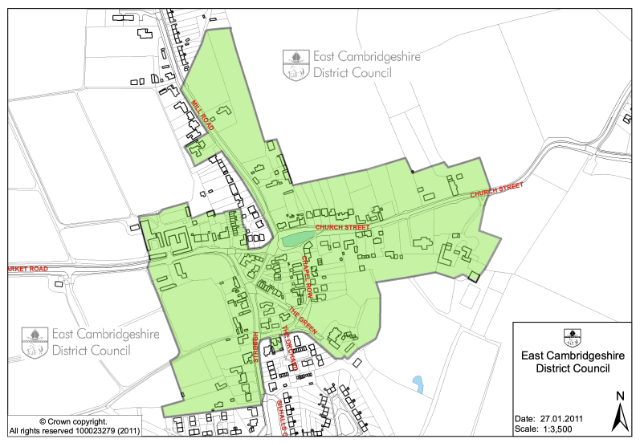Footpath
There is a duty on the Local Planning Authority to determine what parts of their district are areas of special architectural or historic interest. Having established a conservation area they are also required to review the designation and boundaries of that area. This is to ensure the area is still considered to be of value and to consider whether any areas have been overlooked or changes have occurred which need the boundaries to be redrawn. Any pressured for change in the area can thus be identified and enhancement opportunities highlighted.
Living in a Conservation Area
Conservation areas exist to protect the special architectural and historic interest of a place - in other words the features that make it unique and distinctive. This page explains what it means to own a building in a conservation area.
How being in a conservation area can affect you
Although conservation areas mean some extra planning controls and considerations, these exist to protect the historic and architectural elements which make the place special. They are most likely to affect owners who want to work on the outside of their building or any trees on their property. For further information on conservation areas and how they are managed, please see our planning advice page on conservation areas.
Your house
Being in a conservation area might mean that your house is affected by special controls (called 'Article 4 Directions'). These restrict work you can normally do without planning permission such as replacing a door or window or altering gutters and downpipes.
These controls are tailored to each area by the council, and are put in place when there are particular elements of local buildings they want to protect. Find out if an Article 4 Direction applies to your area by contacting the Local Planning Authority
Trees
If you want to cut down, top or lop any but the smallest of trees in a conservation area you must notify your local planning authority six weeks before work begins. The authority will then consider the contribution the tree makes to the character of the area and if necessary create a Tree Preservation Order (TPO) to protect it.
Demolition
If you live in a conservation area and want to demolish your building, you will need Planning Permission. If the building is listed you will also need Listed Building Consent.
Permitted development
Permitted Development (PD) rights are slightly different in conservation areas compared to other areas. This means that you need to make planning applications for some forms of development which would not need such applications outside conservation areas. For example:
· Detailed residential changes like two-storey extensions, dormer windows, and stone cladding
· Extensions to retail premises (smaller floorspace increases; appearance should match the existing; limitations to click and collect facilities)
· Industrial and warehouse buildings (smaller floorspace increases)
· Controls on materials for buildings on the site of a school, college, university or hospital
· Limitations on change of use such as retail or agricultural to dwelling house
Who do I ask about changes?
The local planning authority will tell you what you can do to your home if you live in a conservation area. They can tell you if there are special controls in place and explain what permissions will be needed.
Many local planning authorities prepare Conservation Area Appraisals for their conservation areas. An appraisal outlines the history of an area and explains what makes it special. It also provides some general guidelines on managing and carrying out development in the conservation area.
In addition, local planning authorities will sometimes produce Supplementary Planning Documents for their conservation areas. These show how the authority intends to manage the area in the long term.. It is worth checking with your local planning authority to see if any such documents exist for your conservation area.
The financial benefit of conservation areas
People value conservation areas for their distinctiveness, visual appeal and historic character and research by the London School of Economics and Historic England has found that this value is reflected in the price of properties in conservation areas.
Generally they cost more and appreciate in price more than properties in other areas, even after adjusting for location and other factors.
Map of Conservation Area

